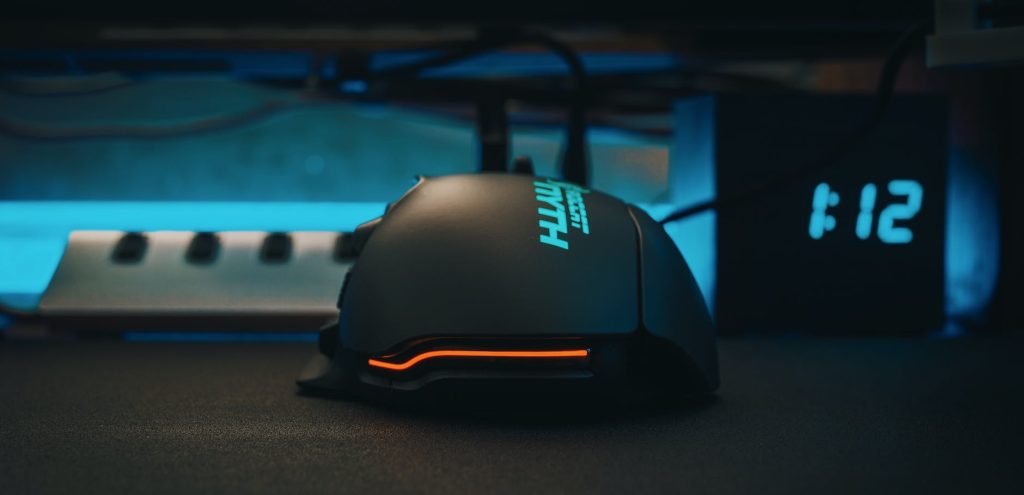It has been estimated that more than 90% of Amazon FBA sellers do not succeed long term. That’s an astounding number. In fact, that’s more than half the people who sign up for a seller account and actually list a product let alone those that ever get on a listing at all! There are a number of factors that go into that statistic of course, and I’ll explain a bit more how this could possibly be the case.
While you may have heard the many success stories of Amazon sellers making it big on the monster e-tail platform, most have fallen along the way and are no longer to be found. No one wants to admit failure, especially after spending hours of training, and hundreds to thousands of dollars in start-up costs. This is definitely not an easy decision to make, to up and leave your Amazon FBA dream. I truly empathize with those who take their bets off the table and fold; I know too well how this feels as I’ve been there too.
The U.S. Amazon marketplace has hundreds of millions of products listed across 30 categories and over 200 million users visiting Amazon’s websites per month. Almost every brand you have heard of will be listed (or waiting to restock). Amazon Prime is now a household name and has grown to epic proportions, especially during the COVID-19 pandemic. So, why are FBA sellers leaving the Amazon gravy train?
Is it profitable to sell on Amazon now and in the future? Yes absolutely! And is it easy to find profitable products with a Best Seller Rank that gives you at least 10% ROI or more? Well no, unfortunately this is one major factor that has made it especially difficult for many new sellers and wannabe sellers.
While it may sound easy to just ship your products to an Amazon FBA warehouse, and have them handle everything else, you will want to approach Amazon with caution. ‘Why is that?’ you ask. Well you need to understand that like every competitive business out there, Amazon too looks out for its own interests. Those interest will have a significant impact on how well you do in your FBA business. That is why there are a gazillion guidelines to follow – if you don’t take heed of them – watch out!
This is perhaps the NUMBER 1 reason people fail at FBA — both wholesale and private label. A new seller may rush through the first part of doing product research and pick the first product that calculates OK, and is readily available. Then when they go to list the product they realize the product is not that great after all. They learn soon enough that there is either too much competition for the Buy Box, or barely any demand at all. Or even worse: They did not check to see if the product was being “sold and shipped by Amazon” itself!
Product selection is by far the most difficult task of all in the FBA business and does depend a lot on whose getting the best wholesale prices. As a newbie you never want to go on a product listing that Amazon is dominating. Amazon sells a vast range of brand name products as well as their own brand, so they dominate tons of listings.
SOLUTION: Spend at least 4 weeks on product research as there are a number of criteria to look for when picking the right product to sell on Amazon. Do not rush this process. Invest in product research tools, one of the most popular is Keepa. If going private label, you will want to check out AmazeOwl.
When you are out sourcing for inventory, don’t just look at the current price, but look at the price history in the past 12 months using Keepa. Then you will know how low a product can sell on Amazon and how potentially high. This will help you decide what wholesale price range you will want to look for to earn at least a 10% return-on-investment, after Amazon fee deductions. In turn, this can eliminate a number of suppliers off your list as you narrow down to competitive pricing and the availability of inventory you are going after.
When it comes to “vetting” wholesale suppliers, you not only want to ask for their most current inventory spreadsheet, but you want to find out what their experience has been, if any, working with Amazon FBA sellers. This will give you huge insight into how well they serve this market. Most suppliers will have a Minimum Order Quantity (MOQ) before taking on any new customer orders, including Amazon sellers. Some smaller suppliers will no longer work with FBA sellers, based on a bad previous experience.
You won’t actually know how well a supplier’s service is until you get working with them and starting building a relationship with their key sales people. If you’re a serious buyer and take action, they will likely answer your future calls and provide you better deals later on. Just don’t expect good wholesale deals as a new account, unless you’re spending at least $1,000 or more on inventory (or your competition will get their hands on those better deals).
SOLUTION: Do have a few questions ready to ask each potential supplier, and see how well they know about the Amazon FBA system. You’d be amazed how much more you can learn from their experience alone. Just beware that you do not work with suppliers who are also selling on Amazon, as they won’t give you the best wholesale deals. Invest in the World Wide Brands Directory if you want to find ‘100% Certified’ wholesale companies for any kind of brand or product in North America.
I’m sure you have heard the cliché: “Don’t put all your eggs in one basket”. There is logic behind that saying that has made it quite popular. FBA sellers who don’t continue to expand on Amazon don’t stay very long. So, if you have found one successful product to sell, make sure you expand ASAP, and have 5 more successful products running! That way if one of them tanks at the buy box, you will still have 5 profitable products to rely on. The more products the better.
In fact, Amazon encourages sellers to list at least 40 different products from their storefront, and that’s a lot of start-up expense to consider. Not only that, but you have to overlook all listings where Amazon is dominating the buy box, and that’s a whole lot of listings! You will definitely have to think outside-of-the-box as you do your product research because many sellers gave up when it became more and more difficult to find profitable products and with few competitors.
SOLUTION: Ideally, you want to spread out your sales with products across different categories. All the seasoned sellers do this. However, this is not an easy task, in fact, this is where many new sellers get stuck in the mud. If you want to grow your business long term, you need to source for a variety of products, including products that are considered ‘oversized’ (e.g. golf clubs). These decisions will depend largely on your budget, as the heavier or larger the product, the more expense for shipping and storage.
When you start selling on Amazon, make sure you learn the rules —what you can and cannot do. If you violate certain Terms of Service, and are not maintaining the standard that has been set, Amazon can and will shut your account down. This seems to be common practice now. Struggling to get out of an account suspension is another reason why sellers lose their business and fail. Going through the appeal process is a real hassle and can take weeks on end. All the while your listings are stranded on the Amazon matrix no longer selling.
Here are the main reasons why Amazon suspends an account:
SOLUTION: First and foremost prevention is always better than a cure. You have got to learn the rules and policies of Amazon and abide by them. Learning from others who have had their accounts suspended will keep you on your toes. Always respond as fast as you can to any of Amazon’s policy warnings and/or notifications. Be prepared to hire help if you don’t know how to write a Plan of Action to reinstate your account.
Many people think FBA is a great way to get extremely wealthy overnight when they see all the potential products they could sell on such a tremendous marketplace. Of course, this is not the reality. Amazon FBA is a business that requires a lot of hard work and dedication. They say it requires a long-term perspective. Too many people sign up for an Amazon seller account thinking it’s going to be an easy way to make money – at least that’s how the Amazon gurus make it sound – and then quickly find out that’s just not the case, so they eventually quit.
Amazon has a huge learning curve. You will have to learn about the many different categories, about their fees, about shipping in your goods, about calculating your margins and forecasting your profitability, and so many other aspects to working this business. On top of that you have to constantly be contacting new and current suppliers, and they don’t operate during evenings or weekends.
SOLUTION: The cost of doing business with Amazon can be extremely high, so do invest in a reputable training program that teach you the ropes. Join a community of other students who are learning how to do Amazon FBA and can provide you support in the journey.
FINAL THOUGHTS
Amazon is a rapidly evolving marketplace where a lot of FBA sellers come and go. Decide early on if Amazon is really the online busines for you, or if you have assessed all your options. Pick the best option that suits your vision, your goals and your budget.
The current success rate of Amazon FBA may not be in your favor, but then again, there are risks involved in any new business venture, online or offline. I myself prefer to operate a business that I have full control of and not play in someone else’s sandbox. There are other options to consider that are quite lucrative and way less competitive


